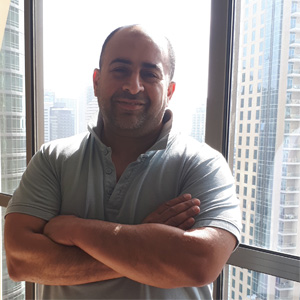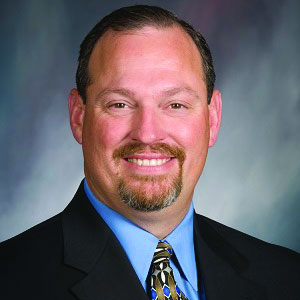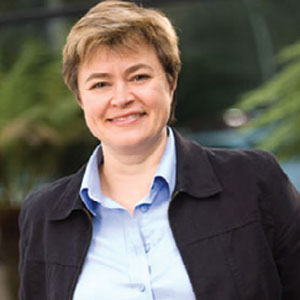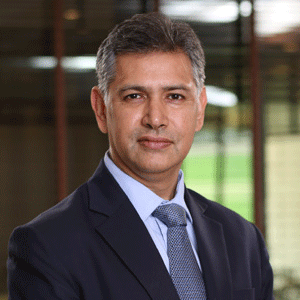THANK YOU FOR SUBSCRIBING
 Madhat Abdel Jawad, Managing Director
Madhat Abdel Jawad, Managing DirectorAdvanced Analysis’s software exploCFD is leading a revolution in explosion consequence modelling. The software is the recent winner of the IChemE global Process Safety award for 2020. For the last 40 years, explosions have been modelled using one of two approaches: the widely used analytical approach, and Computational Fluid Dynamics (CFD). Analytical methods give crude one dimensional radial results. CFD is simply too slow and too expensive to be used in high pressure, time critical situations. What is less known is that CFD for explosions also has significant inherent uncertainty. It’s a difficult problem to solve where the inputs are sometimes unknowable. This is the reason the new hybrid approach to explosion modelling is becoming increasingly popular in industry. The results from hybrid methods are proving to be within the uncertainties of the CFD approach and achievable with speed and ease comparable to that required for the analytical approach.
“With exploCFD, the explosion source is calculated using analytical methods. Results from that are fed into a CFD analysis of the wider domain,” explains Madhat Abdel Jawad, managing director of Advanced Analysis, detailing how the software functions. On top of that, the engineers at Advanced Analysis have automated the process of converting a simple plot plan into a CFD domain making the process even faster, cheaper and less prone to error.
Apart from exploCFD, the engineers and programmers at Advanced Analysis have created quite a few one-of-a-kind tools such as DigiTwїn– an advanced drawing analysis software, designed to automate not just the analysis of piping and instrumentation diagrams (P&IDs) but also plot-plans and building drawings, among others. The software helps engineers carry out the tedious parts count and material takeoffs which are vital for QRA’s and MEP proposals.
The software is being used in construction, electrical, mechanical, and plumbing projects and shows potential in several other areas even in the medical field. Many of the symbols in MEP drawings and P&IDs vary from region to region, from company to company and project to project. A big part of what DigiTwїn offers is that it arms its clients with the capability to define any symbol and add it to their libraries making every symbol detectable, explains Dr. Abdel-Jawad. And its also fast. It takes an-hour-a-drawing to do this manually. This works out to be tens of thousands of dollars a project. DigiTwїn does it in minutes.
Collectively, DigiTwїn and exploCFD offer users a multitude of functionalities to quantify consequence and risk. “Whether it is the risk of an explosion or simply losing money on a project, quantifying risk is vital, and this is what we are re-engineering,” says Abdel-jawad.
Their software products are aimed at simplifying tedious, expensive and error prone manual tasks.
Advanced Analysis has already added machine learning capabilities into its software suite and plans to do much more. They want to tackle even more complex physical problems such as bushfires, which require the consideration of hard to quantify properties such as ember generation and transport. There are even potential applications in the financial industry and in the medical field. Advanced Analysis have recently demonstrated how their software DigiTwїn can address medico legal risk by rapidly recording the number and types of surgical items on a surgical tray.
Whether it is the risk of an explosion or simply losing money on a project, quantifying risk is vital, and this is what we are re-engineering
The software is being used in construction, electrical, mechanical, and plumbing projects and shows potential in several other areas even in the medical field. Many of the symbols in MEP drawings and P&IDs vary from region to region, from company to company and project to project. A big part of what DigiTwїn offers is that it arms its clients with the capability to define any symbol and add it to their libraries making every symbol detectable, explains Dr. Abdel-Jawad. And its also fast. It takes an-hour-a-drawing to do this manually. This works out to be tens of thousands of dollars a project. DigiTwїn does it in minutes.
Collectively, DigiTwїn and exploCFD offer users a multitude of functionalities to quantify consequence and risk. “Whether it is the risk of an explosion or simply losing money on a project, quantifying risk is vital, and this is what we are re-engineering,” says Abdel-jawad.
Their software products are aimed at simplifying tedious, expensive and error prone manual tasks.
Advanced Analysis has already added machine learning capabilities into its software suite and plans to do much more. They want to tackle even more complex physical problems such as bushfires, which require the consideration of hard to quantify properties such as ember generation and transport. There are even potential applications in the financial industry and in the medical field. Advanced Analysis have recently demonstrated how their software DigiTwїn can address medico legal risk by rapidly recording the number and types of surgical items on a surgical tray.

I agree We use cookies on this website to enhance your user experience. By clicking any link on this page you are giving your consent for us to set cookies. More info













